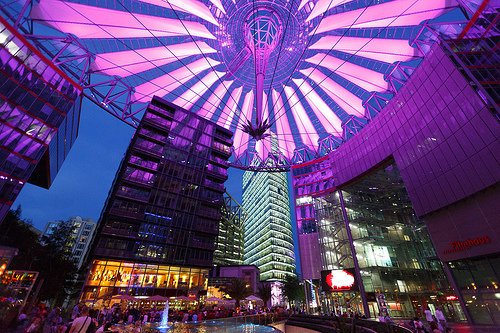In another time it was the busiest square in Europe, today it is a site of samples of modern architecture in reunified Berlin!

potsdamer platz in berlin seems to have a controdicción in that term, since the Potsdamer plaza is not a square in the strict sense that this term has in the world. It was never an open place surrounded and defined by buildings, like a normal city square, despite being an open place. began to exist as a plot of grass outside the gates of the city, the potsdamer tor (the work of the great classical architect Karl Friedrich schinkel), next to the baroque wall of the city
both the pórton and the fortress took their form in the mid-nineteenth century. Then there was a train station with the first railway line from Berlin to Zehlendorf, a country town in Mark Brandenburg, which is now an elegant residential district of the city.
Later, a whole variety of buildings grew around the plaza, most of which were gastronomic, commercial, business, hotels and restaurants.
in those days the square was by far the most traveled in Europe, with a traffic tower of five sides in which constantly circulated incontablr amount of cars and the lines of trams of 30 routes.
The potsdamer platz of today is an area densely built with banks, hotels, boutiques and entertainment establishments. the former Haus Huth wine and restaurant bar, which the poet Gofftried Benn, among others, made famous, is the only building in the original square that was saved from the war in its entirety. the formerly famous large hotel Esplanade was also saved, and it became a wobbly feat and technically discarded, with a new exterior